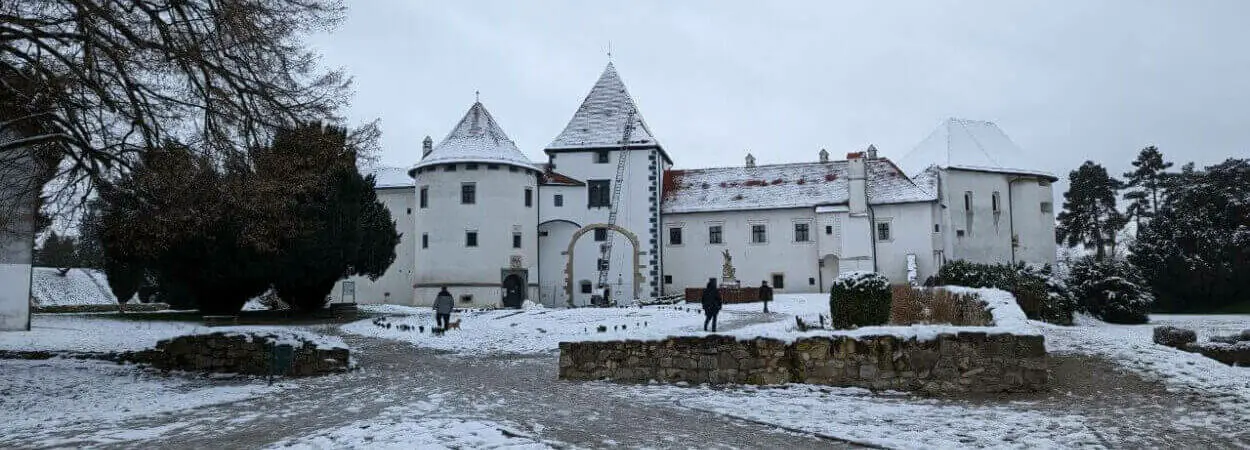Most people think Croatia is warm year round. In reality, this isn’t an accurate representation of the weather in Croatia. Today, we’ll look at the climate in a few different cities to give you an idea of what it’s actually like in Croatia during the winter and summer. First, though, let’s answer the question that most of you came for.
Is it always warm in Croatia?
The short answer is no; Croatia is not warm year round. January tends to be the coldest month, while July tends to be the warmest. In January, you’ll find weather between 30 °F – 50 °F (-2 °C – 10 °C), and in July, 78 °F – 88 °F (26 °C – 30 °C).
So what is the climate of Croatia?
The Köppen climate classification describes Croatia’s climate as continental. Generally speaking, that means it tends to be warm and rainy, with average temperates in January of minus 27 °F (3 °C) and 64 °F (18 °C) in July.
The main thing you should remember is that it is quite far between the northernmost and southernmost points in Croatia. In fact, if you draw a line, it’s about 500 kilometers or 300 miles. There are also mountains in the north that make it colder (and snowier!) than the southern part.
For Americans, though, this would be the difference between living in Pennsylvania and North Carolina. Having lived in Both states and Croatia, I would even consider this a good comparison to the climate differences in northern and southern Croatia.
As I type this in Zagreb in January, it’s 36 °F (2 °C). At the same time, it’s 54 °F (12 °C) in Dubrovnik. This is typical for winter here. If you head up into the mountains to a city like Varaždin, it’s usually even colder. The same contrast exists during the peak of summer, though not as extreme.
Does it snow in Croatia?
Yes, it snows regularly during winter in Croatia. The caveat here is that it mostly only snows in the northern part of the country.
It snows about 8in (20cm) throughout winter in Zagreb. It can snow 2-3 times more in the mountains than this. So far, during my time here, more than a couple of centimeters have accumulated on the ground. I should also mention that the roads are well taken care of when it snows.
However, it’s very rare for it to snow in the south. The last time it snowed in Dubrovnik was in 2017, and the entire city shut down.
Coldest city in Croatia
The coldest city in Croatia is Delnice. It’s about one mile above sea level and inside Primorje-Gorski Kotar County. The coldest month of the year is January, where the average temperature is 32 °F.
Warmest city in Croatia
The warmest city in Croatia is Dubrovnik, where the average temperature in January is 55 °F. The warmest month is July, where the average temperature is 86 °F. Dubrovnik also doesn’t have a typical Mediterranean climate because it gets too much rain. On top of that, though, it does get a ton of sun. Approximately 250 sunny days per year, to be exact.
How warm is Croatia in May?
May is the beginning of the tourist season, and it can still be a little chilly. At the end of May, the air temperature can reach 75 °F (24 °C), and the sea temperature can also reach 75 °F (24 °C). If you’re planning to hit the beach, your best bet is to visit one of the southern cities like Dubrovnik since it will have the warmest air temperature and water.
But it can also still be cold depending on the weather for that particular year. So, check if winter/spring has been mild before you book your trip.
How warm is Croatia in October?
October is the end of the tourist season, and it usually starts getting cooler in the second half of September. The first half of October has similar temperatures to the end of May. That is, the air temperature can reach 75 °F (24 °C), and the sea temperature can also reach 75 °F (24 °C)
From my experience, in 2023, you could swim in Split until the beginning of November. Again, if you plan to come for the beach, visit a city like Dubrovnik in the south to have the best chance of having warm weather and water.
Thinking about moving to Croatia?
Whether you’ve been to Croatia before or not, there are some things you should know before you move. In this post, I cover 18 things you should know about living Croatia before you move.

